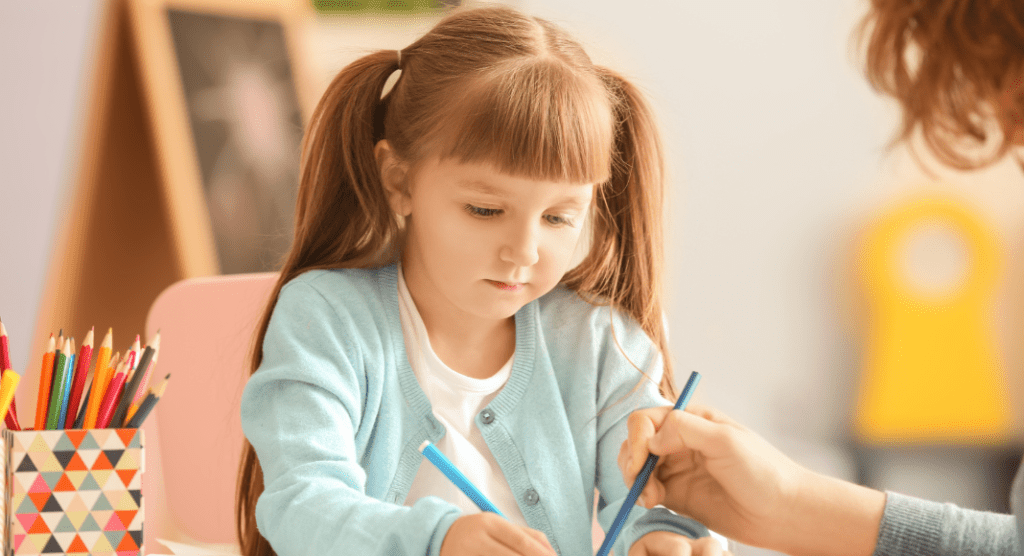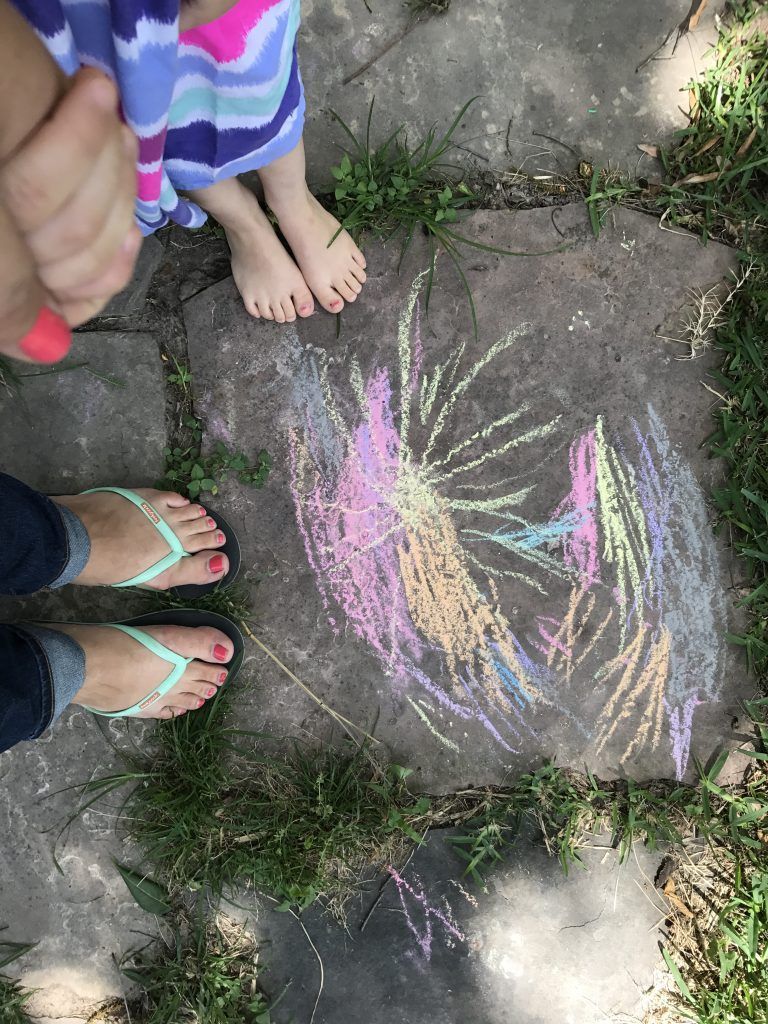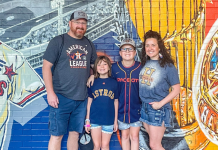 During the 9 months of pregnancy in which I was growing our daughter I often thought to myself, “I wonder what weird thing I am going to do that is going to screw her up in adulthood and she’ll talk to her therapist about.”
During the 9 months of pregnancy in which I was growing our daughter I often thought to myself, “I wonder what weird thing I am going to do that is going to screw her up in adulthood and she’ll talk to her therapist about.”
Three years and 11 months from the date of her birth, our house burned down because of a candle I forgot to blow out. We lost everything, including our dog, and I thought, “I’ve done it. This is the childhood trauma that will change who she becomes as an adult in the worst possible ways. This is the way I’ve stapled baggage to my child, and boy did I do it up big.”
As my husband and I started therapy to deal with our own PTSD, anxiety and guilt from the house fire, we realized, even though she was only four, she needed it too. I had vague memories of childhood play therapy, at age 6 or so, when my parents were getting divorced. I couldn’t tell you if it actually helped me process it at all, but I did reminder feeling positive about the experience.
 Our therapist recommended a child therapist, Ms. L, and we brought this small human to her office to play and talk and work through her feelings.
Our therapist recommended a child therapist, Ms. L, and we brought this small human to her office to play and talk and work through her feelings.
Six years later, and we can say with absolute certainty, it was truly the best thing we ever did. We didn’t realize it at the time, but we were fostering a positive culture shift around mental health care for our daughter. We were showing her she had every right to care for her mental health, and we weren’t just leading by example, she was experiencing it.
Her therapist cleared her years ago from mental health damage and issues from our house fire. Her therapy frequency turned into an as needed basis, and we empowered her to just let us know if she needed to talk to Ms. L and we’d set up an appointment.
What we didn’t expect was to have a guide in raising our child. The short, private meetings we’d have with Ms. L after our daughter’s session gave us an opportunity to ask questions about her behaviors or development. She was able to give us clinical advice about our child’s development and how we could best navigate who she was. Ms. L was the first to identify our daughter might be gifted, noticing right away that her brain operated differently. She helped us advocate for service for her in school and she gave us tools for raising a gifted child. She validated a lot of our thoughts and feelings and made us feel empowered when making decisions on how to raise her.
As our therapy turned from working through trauma from the fire to working through our own childhood traumas neither of us had the opportunities to deal with at the time, Ms. L helped us figure out how to adjust our own child rearing so we didn’t expose our daughter to the same traumas.
I am forever thankful to her.
I recently interviewed my husband for our podcast about the trauma he’s dealt with from fighting and beating childhood cancer. There are so many things he’s discovered and worked through in our post-fire therapy because that childhood cancer trauma wasn’t dealt with as a child. He wishes he would have been prescribed therapy, along with the chemo, so he could deal with all those huge feelings then and there, instead of carrying them on into how he functions as an adult.
Now as we are staring down the barrel of puberty, our daughter knows she has someone neutral and safe to talk to, someone who will be in her corner, and she knows she never has to deal with things alone. When we’ve had a particularly rough week, or when she starts experiencing new, big feelings, she’ll ask, “Mom can you set up an appointment with Ms. L, I think I need to talk.” We’ve enabled her with tools so she doesn’t have to take childhood trauma baggage with her into adulthood.
The Youth Mental Health Crisis in America
 In December 2021 the Surgeon General issued a public health advisory of a youth mental health crisis. Most of this was based on data before the pandemic, and we all know the pandemic didn’t help matters. Suicide is the second leading cause of death in youth ages 10-24. Between 2000-2001 suicide rates for this age group increased 52.2%.
In December 2021 the Surgeon General issued a public health advisory of a youth mental health crisis. Most of this was based on data before the pandemic, and we all know the pandemic didn’t help matters. Suicide is the second leading cause of death in youth ages 10-24. Between 2000-2001 suicide rates for this age group increased 52.2%.
While these statistics about suicide are heartbreaking, we have to remember suicide is just one horrific outcome of untreated traumas, depression and other mental health issues. Kids without mental health care can develop a host of other negative behaviors such as violence, feelings of sadness or hopelessness, poor self esteem, alcohol and drug abuse, anxiety, depression, eating disorders, anger issues, and the list goes on.
So how do we make it better? How do we fix it? It feels huge, and it’s going to take a village, but I think the solution boils down to two things: changing the culture in America around mental health care for children and adults and providing access.
Change the Culture Around Mental Health Care for Children
Something doesn’t have to be wrong for you or your child to see a therapist. Seeing a therapist isn’t bad. If we can share about hitting a personal record on a 5K, or a selfie at the gym where we’ve worked out our bodies, we can share about going to see our therapist to work out our minds. We have to start viewing mental health care as part of health care as a whole.
We also have to normalize conversations around mental health care. This can start right at home. If you see a therapist, talk to your kids about it. Let them know if they need someone to talk to, you’re willing to find a therapist for them. Be willing to let your children share their big feelings with you, make a safe space for them to share and just listen.
Creating Access to Mental Health Care
This solution has so many layers and it’s truly another post all in itself. To keep it short, here are some top access issues.
Mental Health Care for Children: Access in Schools
When I was advocating for my daughter’s public elementary school, one of my biggest complaints was her school had one counselor for over 700 students. One. The American School Counselor Association recommends 1 counselor for every 250 students. The national average for grades K-8 ranges from 613:1 to 787:1, for grades 9-12, 204:1-243:1. Studies have shown smaller ratios of students to counselors can increase standardized test performance, attendance, graduation rates, conversations about furthering education as well as a decrease in disciplinary infractions.
Bottom line, we need more counselors in schools.
Coverage & Recommendations for Mental Health Care
Many health insurance plans do not cover mental health care, or have major limitations on coverage. For the uninsured, mental health care is a luxury.
Most doctors are not trained to prescribe mental health care as part of a treatment plan. Mental health is often at the bottom of the list of medical issues to be treated while it contributes to countless physical health ailments including diabetes, heart disease, stroke, drug and alcohol abuse, fatigue, cancers, arthritis, respiratory disease, insomnia, and more.
We Need More Mental Health Providers
Nationwide there is a shortage of mental health professionals. In Texas, it’s worse. Of Texas’ 254 counties, 98% of them have been designated as “mental health professional shortage areas” by the federal government.
Bottom line, we need more mental health providers. Several bills are on the docket this session in Texas to offer some relief. One offers loan repayment assistance, another would allow school districts to hire a licensed master social worker for a non-physician mental health professional position.
We ALL Have to Come to the Table
We can all agree, mental health is a major issue in our country, especially among our youngest population. There isn’t one culprit for this predicament and there isn’t one single solution. It’s going to take many people, from all sides of the coin coming together, working together and making changes.
In the meantime, we can start making the changes at home, normalizing mental health care for children one big feeling at a time.
 UTMB Health
UTMB Health
Website | (800) 917-8906
 The University of Texas Medical Branch (UTMB Health) system of care includes hospitals and emergency departments on four campuses, a network of primary and specialty care clinics, urgent care and walk-in services, and collaborations with physicians throughout the region. UTMB Health serves patients throughout Texas, and features an extensive network of primary and specialty care clinics and centers that complement hospitals on three campuses.
The University of Texas Medical Branch (UTMB Health) system of care includes hospitals and emergency departments on four campuses, a network of primary and specialty care clinics, urgent care and walk-in services, and collaborations with physicians throughout the region. UTMB Health serves patients throughout Texas, and features an extensive network of primary and specialty care clinics and centers that complement hospitals on three campuses.
Check out UTMB’s various locations
around the Houston area:
Alvin | Angleton | Dickinson | Friendswood | Galveston | Lake Jackson | League City| Texas City | Webster | Regional | Urgent Care | Emergency Care












